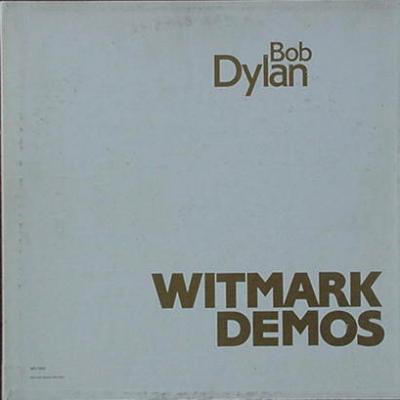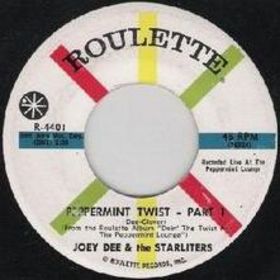
4 August 2010
Riverside Theater, Milwaukee[On occasion, our far-flung correspondents attend and review shows. Here's another installment.]BY THE NIGHT OWLIn between songs during The National's sold-out concert Wednesday night at The Riverside Theater, guitarist Bryce Dessner recounted the days years ago when their visits to Milwaukee would revolve around shows at a RiverWest neighborhood tavern. Naturally, someone in the audience shouted out "I was there!" To which Dessner replied, "Yeah, it was just you and me, buddy."
Sometimes it is hard to believe that The National is now rating lengthy profile pieces in
The New York Times Magazine, selling out Radio City Music Hall, and packing 2,500 seaters like The Riverside. After all, this is a band whose latest album begins with the words "terrible love and I'm walking with spiders" and ends with "I'll explain everything to the geeks." And their lead instrument is arguably the drum. Not exactly mainstream stuff, right?
Well, on this warm and humid night, on a stage purposely compact and intimate, The National continued to make its bones and amble down the road to becoming, quite possibly, America's best band.
Without fanfare, the group took their places: twin guitar playing brothers Bryce and Aaron Dessner; drummer Bryan Devendorf; bassist Scott Devendorf; and vocalist Matt Berninger. They were accompanied by a multi-instrumentalist and a two man brass section.
Berninger, surely the tallest lead singer in all of rock and roll, stood ramrod straight at the mic stand and greeted the crowd with "there's no savin' anything," the opening line to the song "Runaway," a tune off the new CD
High Violet. It was accompanied by a beautiful, subtle building of melody and got The National quickly in the pocket. But this reading of "Runaway," much in the mold of the tightly produced version found on the LP, proved deceiving. For outside the studio, The National showed that it gladly revisits its bar band roots and knows how to play to a crowd after over ten years on the road.
"Mistaken For Strangers" revs things up. The brothers Devendorf are joined at the hip musically and almost figuratively when one focuses on them on stage. And the haunting New Order hollow guitar sound compliments the detached lyrics written by Berninger.
"Anyone's Ghost" and the amazing "Bloodbuzz Ohio" follow, and there's no subtlety now. The bass drum is thumping into your heart. Heavy metal guitar breaks fill the air. Berninger has taken his black blazer off and rolled up his sleeves; he's shadow boxing with the drummer. It's time to go to work.
"Squalor Victoria," an underrated gem from the new album, turns into an unlikely clap along anthem.
[Ed. note: "Squalor Victoria" is mistakenly identified above as being a cut from High Violet. In fact, the song is off of Boxer. Thanks to our readers for the heads up.] "Afraid of Everyone," a deeply affecting Berninger tale of new fatherhood, takes on a spooky vibe. It is a riveting performance by the entire crew, nicely accented by the horns.
It is at this stage that your reviewer is reflecting on just how full the stage sound is of The National. Quite a contrast from the meticulously produced albums that almost seem at times like a nod to minimalist classical works. As the Stones eloquently put it, it's live where this group gets its ya-yas out.
The set continues to rely heavily on
High Violet, and rightly so, as it is an early contender for album of the year. "Conversation 16" is brilliant; it sounds like a lost Flannery O'Connor short story set to a brooding melody. "Sorrow" and "England" are affecting as well. The former starts with a high hat nick from "Theme From 'Shaft'," evolves into a Edge-like sonic guitar, and then adds still another layer with a melancholy horn chart. "England" creates a pastoral feeling; while The National publicly states that they try to avoid outright musical influences, the song is a perfect live partner to "Sorrow" as it is also in the U2 wheelhouse, building up to an anthemic chorus.
The wonderful "Fake Empire" closes the set, a not so veiled shot at the previous presidential administration and now no doubt at the money changers who have brought ruin to so many. Its cacophony of sound at the end of the song is glorious.
The four encores are highlighted by "Secret Meeting" - leaving this reviewer agape at the drumming of Devendorf - and the roof-raising "Mr. November," in which Berninger leaves it all on the stage. In the tradition of great rock and roll, The National departs the stage in a buzz of sound.
A band makes its mark on popular music when its influences - face it, everybody nicks from their idols - are not readily evident and, as a result, create their
own sound in the listener's mind
. These are the bands that prevail over the years despite changes in style and in turn create a road map for future musicians, regardless of sales and/or acclaim. While I'm not ready to proclaim The National as part of the unique succession of American rock and rollers that so many now (or will) point to as seminal - Chuck Berry, Bob Dylan, The Velvet Underground, Bruce Springsteen & The E Street Band, R.E.M., Wilco - the potential is there. The National has paid its dues and learned their trade. They tell compelling stories that are drenched in Heartland Americana. They get better with each studio album. And they are a confident and an original presence on stage.
The mantle of Best American Band may change hands in the near future.
SET LIST (Thanks to Connor)RunawayMistaken For StrangersAnyone's GhostBloodbuzz OhioBrainySlow ShowSqualor VictoriaAfraid of EveryoneLittle FaithAvailable/Cardinal SongConversation 16Apartment StoryGeese of Beverly RoadAbelSorrowEnglandFake Empire--ENCORE--Vanderlyle Crybaby GeeksSecret MeetingMr. NovemberTerrible Love
 California Sun
California Sun






















